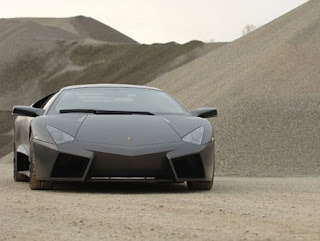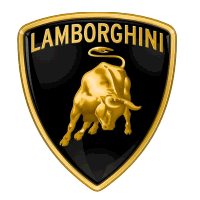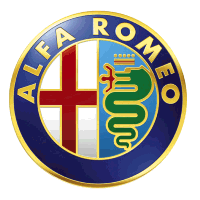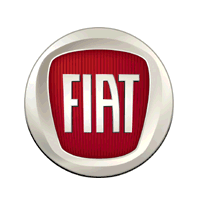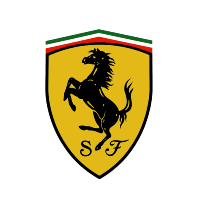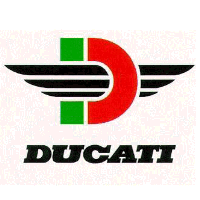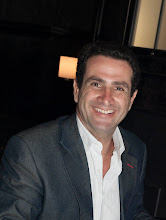Founded 1899. Headquarters Turin, Italy. Key people Luca Cordero di Montezemolo Chairman John Elkann Vice Chairman Sergio Marchionne C.E.O.
Website http://www.fiatgroup.com/
Fiat S.p.A., is an Italian automobile manufacturer, engine manufacturer, financial and industrial group based in Turin, Northern Italy. Founded in 1899 by a group of investors including Giovanni Agnelli, the company name FIAT is an acronym for Fabbrica Italiana Automobili Torino (Italian Automobile Factory of Turin), and it also means "let there be" in Latin. Fiat was also an aircraft manufacturer at one time.
Fiat branded cars are constructed all around the world; in Italy, Poland, Brazil (best seller [2]) and Argentina. Joint Venture productions in France, Turkey, Egypt (with the state owned Nasr car company), South Africa, India and China.
Agnelli's grandson Gianni Agnelli was Fiat chairman from 1966 until his death on January 24, 2003. However, from 1996, he only served as an "honorary" chairman, while the chairman was Cesare Romiti. After their removal, Paolo Fresco served as chairman and Paolo Cantarella as CEO. Umberto Agnelli then took over as chairman from 2002 to 2004. After Umberto Agnelli's death on May 28, 2004, Luca Cordero di Montezemolo was named chairman, but Agnelli heir John Elkann became vice chairman at age 28 and other family members are on the board. At this point, CEO Giuseppe Morchio immediately offered his resignation. Sergio Marchionne was named to replace him on June 1, 2004.
Activities FIAT Group Revenues by Industry in 2004The group's activities were initially focused on the industrial production of cars, industrial and agricultural vehicles. Over time it has diversified into many other fields, and the group now has activities in a wide range of sectors in industry and financial services. It is Italy's largest industrial concern. It also has significant worldwide operations, operating in 61 countries with 1,063 companies that employ over 223,000 people, 111,000 of whom are outside Italy.
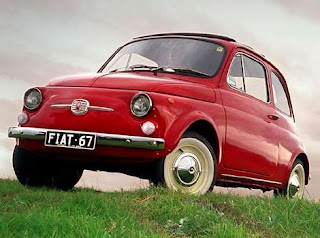 Automobiles Fiat 500 (2007) in Turin Fiat Grande PuntoList of Fiat models since 1899
Automobiles Fiat 500 (2007) in Turin Fiat Grande PuntoList of Fiat models since 1899
Fiat Group is the largest automobile manufacturer in Italy, with a range of cars including the Fiat Panda, Grande Punto, Stilo, Idea, Croma, Ulysse and Doblò. Car companies are run by Fiat Group Automobiles S.p.A, Ferrari S.p.A. and Maserati S.p.A.. Today automobile group runs well known firms like Lancia Automobiles S.p.A, Alfa Romeo Automobiles S.p.A, Abarth & C. S.p.A., Fiat Automobiles S.p.A, IVECO S.p.A., and Maserati S.p.A.. Ferrari S.p.A. is owned by the Fiat Group, but is run autonomously. Light automobile sales accounted for 46.8% of total revenues during fiscal 2004 (3.2% of which is from Ferrari).
The European Car of the Year award, Europe's premier automotive trophy for the past 40 years, has been awarded twelve times to the Fiat Group, more than any other manufacturer. Most recently the Fiat Nuova 500 has won the award for European Car of the Year 2008[3]
Motorcycles and aeronauticsIn 1959, Piaggio came under the control of the Agnelli family. Resultantly, in 1964 the aeronautical and motorcycle divisions split to become independent companies; the aeronautical division was named IAM Rinaldo Piaggio. Today the airplane company Piaggio Aero is controlled by the family of Piero Ferrari, which also still hold 10% of the carmaker Ferrari.
Vespa thrived until 1992, when Giovanni Alberto Agnelli became CEO - but Agnelli was already suffering from cancer, and died in 1997. In 1999, Morgan Grenfell Private Equity acquired Piaggio
Fiat itself was an important aircraft manufacturer, focused mainly on military aviation. After the World War I, Fiat consolidated several Italian small aircraft manufacturers, like Pomilio and Ansaldo. Most famous were Fiat biplane fighter aircraft of the 1930s, Fiat CR.32 and Fiat CR.42. Other notable designs were fighters CR.20, G.50, G.55 and a bomber, the Fiat BR.20. In 1950s, the company designed the G.91 light ground attack plane. Then, in 1969 an aerospace division of Fiat merged with Aerfer to create Aeritalia.
ComponentsThe major Italian component maker Magneti Marelli is owned by Fiat, and in turn owns the other brands Carello, Automotive Lighting, Siem, Cofap, Jaeger, Solex, Veglia Borletti, Vitaloni, and Weber; other accessory brands include Riv-Skf and Brazilian Cofap.
Fiat supports the Fondazione Giovanni Agnelli, an important foundation for social and economic research. Palazzo Grassi, a famous ancient building in Venice, now a museum and formerly supported by Fiat, was eventually sold to the french businessman François Pinault in January 2005.
Fiat has recently begun sponsoring the Jamaican bobsledding team and promoting this sponsorship through commercials. Many like Jamaican athletes because they see them as underdogs and as people who enjoy life. While Volvo sponsors golf, Mercedes tennis, and Hyundai soccer, Fiat is trying to look unique and more light-hearted. Further, the team is relatively cheap to sponsor.5
HistoryGiovanni Agnelli founded Fiat in 1899 with several investors and led the company until his death in 1945, while Vittorio Valletta administered the day-to-day activities of the company. In 1903, Fiat produced its first truck.8 In 1908, the first Fiat was exported to the US.9 That same year, the first Fiat aircraft engine was produced. Also around the same time, Fiat taxis became somewhat popular in Europe.10 By 1910, Fiat was the largest automotive company in Italy — a position it has retained since. That same year, a plant licensed to produce Fiats in Poughkeepsie, NY, made its first car. This was before the introduction of Ford's assembly line in 1913. Owning a Fiat at that time was a sign of distinction. A Fiat sold in the U.S. cost between $3,600 and $8,600, compared to US$825 the Model T in 1908.11 However, upon the entry of the US into World War I in 1917, the factory was shut down as US regulations became too burdensome. At the same time, Fiat had to devote all of its factories to supplying the Allies with aircraft, engines, machine guns, trucks, and ambulances. After the war, Fiat introduced its first tractor.12 By the early 1920s, Fiat had a market share in Italy of 80%.13 In 1921, workers seized Fiat's plants and hoisted the red flag of communism over them. Agnelli responded by quitting the company, retiring to private life, and letting the workers try to run the company. Shortly afterward, 3,000 of them walked to his office and asked him to return to the helm — a request to which he reluctantly agreed. In 1922, Fiat began to build the famous Lingotto car factory — the largest in Europe up to that time — which opened in 1923. It was the first Fiat factory to use assembly lines; by 1925, Fiat controlled 87% of the Italian car market.[4] Fiat made military machinery and vehicles during World War II for the Army and Regia Aeronautica and later for the Germans. Fiat made obsolete fighter aircraft like the biplane CR42, which was one of the most common Italian aircraft, along with Savoia-Marchettis, as well as light tanks (obsolete compared to their German and Soviet counterparts) and armored vehicles. The best Fiat aircraft was the G55 fighter, which arrived too late and in too limited numbers. In 1945 — the year Mussolini was overthrown - the Italian Committee of National Liberation removed the Agnelli family from leadership roles in Fiat because of its ties to Mussolini's government. These were not returned until 1963, when Giovanni's grandson, Gianni, took over as general manager until 1966, as chairman until 1996. 14
Gianni AgnelliAmong Gianni's first steps after he gained control of Fiat was a massive reorganization of the company management, which had previously been highly centralized, with almost no provision for the delegation of authority and decision-making power. Such a system had worked effectively enough in the past but lacked the responsiveness and flexibility made necessary by Fiat's steady expansion and the growth of its international operations in the 1960's. The company was reorganized on a product-line basis, with two main product groups — one for passenger cars, the other for trucks and tractors — and a number of semi-independent division and subsidiaries. Top management, freed from responsibility for day-by-day operations of the company, was able to devote its efforts to more far-reaching goals. In 1967, Fiat made its first acquisition when it purchased Autobianchi. Then, in 1969, it purchased controlling interests in Ferrari and Lancia. According to Newsweek in 1968, Fiat was "the most dynamic automaker in Europe...[and] may come closest to challenging the worldwide supremacy of Detroit." In 1967, Fiat, with sales amounting to $1.7 billion, outstripped Volkswagen, its main European competitor; in 1968 Fiat produced some 1,750,000 vehicles while its sales volume climbed to $2.1 billion. At the time, Fiat was a conglomerate, owning Alitalia, toll highways, typewriter and office machine manufacturer, electronics and electrical equipment firms, a paint company, a civil engineering firm, and an international construction company. Following up on an agreement that Valletta had made with Soviet officials in 1966, Agnelli constructed the AvtoVAZ plant in the new city of Togliattigrad on the Volga that went into operation in 1970 - producing a local version of the Fiat 124 - as the Lada. On his initiative, Fiat automobile and truck plants were also constructed in industrial centers of Yugoslavia, Poland, Bulgaria, and Romania. In 1979, the company became a holding company when it spun off its various businesses into autonomous companies, one of them being Fiat Auto. That same year, sales reached an all-time high in the United States, corresponding to the Iranian Oil Crisis. However, when gas prices fell again after 1981, Americans began purchasing sport utility vehicles, minivans and pickup trucks in larger numbers (marking a departure from their past preference for large cars). Also, Japanese automakers had been taking an ever-larger share of the car market, increasing at more than half a percent a year. Consequently, in 1984, Fiat and Lancia withdrew from the US market. In 1989, it did the same in the Australian market, although it remained in New Zealand.
In 1986, Fiat acquired Alfa Romeo from the Italian government. In 1992, two top corporate officials in the Fiat Group were arrested for political corruption.15 A year later, Fiat acquired Maserati. In 1995 Alfa Romeo exited the US market. Maserati re-entered the US market under Fiat in 2002. Since then, Maserati sales there have been increasing briskly.
Agnelli's grandson Gianni Agnelli was Fiat chairman from 1966 until his death on January 24, 2003. However, from 1996, he only served as an "honorary" chairman, while the chairman was Cesare Romiti. After their removal, Paolo Fresco served as chairman and Paolo Cantarella as CEO. Umberto Agnelli then took over as chairman from 2002 to 2004. After Umberto Agnelli's death on May 28, 2004, Luca Cordero di Montezemolo was named chairman, but Agnelli heir John Elkann became vice chairman at age 28 and other family members are on the board. At this point, CEO Giuseppe Morchio immediately offered his resignation. Sergio Marchionne was named to replace him on June 1, 2004.
Activities FIAT Group Revenues by Industry in 2004The group's activities were initially focused on the industrial production of cars, industrial and agricultural vehicles. Over time it has diversified into many other fields, and the group now has activities in a wide range of sectors in industry and financial services. It is Italy's largest industrial concern. It also has significant worldwide operations, operating in 61 countries with 1,063 companies that employ over 223,000 people, 111,000 of whom are outside Italy.
 Automobiles Fiat 500 (2007) in Turin Fiat Grande PuntoList of Fiat models since 1899
Automobiles Fiat 500 (2007) in Turin Fiat Grande PuntoList of Fiat models since 1899Fiat Group is the largest automobile manufacturer in Italy, with a range of cars including the Fiat Panda, Grande Punto, Stilo, Idea, Croma, Ulysse and Doblò. Car companies are run by Fiat Group Automobiles S.p.A, Ferrari S.p.A. and Maserati S.p.A.. Today automobile group runs well known firms like Lancia Automobiles S.p.A, Alfa Romeo Automobiles S.p.A, Abarth & C. S.p.A., Fiat Automobiles S.p.A, IVECO S.p.A., and Maserati S.p.A.. Ferrari S.p.A. is owned by the Fiat Group, but is run autonomously. Light automobile sales accounted for 46.8% of total revenues during fiscal 2004 (3.2% of which is from Ferrari).
The European Car of the Year award, Europe's premier automotive trophy for the past 40 years, has been awarded twelve times to the Fiat Group, more than any other manufacturer. Most recently the Fiat Nuova 500 has won the award for European Car of the Year 2008[3]
Motorcycles and aeronauticsIn 1959, Piaggio came under the control of the Agnelli family. Resultantly, in 1964 the aeronautical and motorcycle divisions split to become independent companies; the aeronautical division was named IAM Rinaldo Piaggio. Today the airplane company Piaggio Aero is controlled by the family of Piero Ferrari, which also still hold 10% of the carmaker Ferrari.
Vespa thrived until 1992, when Giovanni Alberto Agnelli became CEO - but Agnelli was already suffering from cancer, and died in 1997. In 1999, Morgan Grenfell Private Equity acquired Piaggio
Fiat itself was an important aircraft manufacturer, focused mainly on military aviation. After the World War I, Fiat consolidated several Italian small aircraft manufacturers, like Pomilio and Ansaldo. Most famous were Fiat biplane fighter aircraft of the 1930s, Fiat CR.32 and Fiat CR.42. Other notable designs were fighters CR.20, G.50, G.55 and a bomber, the Fiat BR.20. In 1950s, the company designed the G.91 light ground attack plane. Then, in 1969 an aerospace division of Fiat merged with Aerfer to create Aeritalia.
ComponentsThe major Italian component maker Magneti Marelli is owned by Fiat, and in turn owns the other brands Carello, Automotive Lighting, Siem, Cofap, Jaeger, Solex, Veglia Borletti, Vitaloni, and Weber; other accessory brands include Riv-Skf and Brazilian Cofap.
Fiat supports the Fondazione Giovanni Agnelli, an important foundation for social and economic research. Palazzo Grassi, a famous ancient building in Venice, now a museum and formerly supported by Fiat, was eventually sold to the french businessman François Pinault in January 2005.
Fiat has recently begun sponsoring the Jamaican bobsledding team and promoting this sponsorship through commercials. Many like Jamaican athletes because they see them as underdogs and as people who enjoy life. While Volvo sponsors golf, Mercedes tennis, and Hyundai soccer, Fiat is trying to look unique and more light-hearted. Further, the team is relatively cheap to sponsor.5
HistoryGiovanni Agnelli founded Fiat in 1899 with several investors and led the company until his death in 1945, while Vittorio Valletta administered the day-to-day activities of the company. In 1903, Fiat produced its first truck.8 In 1908, the first Fiat was exported to the US.9 That same year, the first Fiat aircraft engine was produced. Also around the same time, Fiat taxis became somewhat popular in Europe.10 By 1910, Fiat was the largest automotive company in Italy — a position it has retained since. That same year, a plant licensed to produce Fiats in Poughkeepsie, NY, made its first car. This was before the introduction of Ford's assembly line in 1913. Owning a Fiat at that time was a sign of distinction. A Fiat sold in the U.S. cost between $3,600 and $8,600, compared to US$825 the Model T in 1908.11 However, upon the entry of the US into World War I in 1917, the factory was shut down as US regulations became too burdensome. At the same time, Fiat had to devote all of its factories to supplying the Allies with aircraft, engines, machine guns, trucks, and ambulances. After the war, Fiat introduced its first tractor.12 By the early 1920s, Fiat had a market share in Italy of 80%.13 In 1921, workers seized Fiat's plants and hoisted the red flag of communism over them. Agnelli responded by quitting the company, retiring to private life, and letting the workers try to run the company. Shortly afterward, 3,000 of them walked to his office and asked him to return to the helm — a request to which he reluctantly agreed. In 1922, Fiat began to build the famous Lingotto car factory — the largest in Europe up to that time — which opened in 1923. It was the first Fiat factory to use assembly lines; by 1925, Fiat controlled 87% of the Italian car market.[4] Fiat made military machinery and vehicles during World War II for the Army and Regia Aeronautica and later for the Germans. Fiat made obsolete fighter aircraft like the biplane CR42, which was one of the most common Italian aircraft, along with Savoia-Marchettis, as well as light tanks (obsolete compared to their German and Soviet counterparts) and armored vehicles. The best Fiat aircraft was the G55 fighter, which arrived too late and in too limited numbers. In 1945 — the year Mussolini was overthrown - the Italian Committee of National Liberation removed the Agnelli family from leadership roles in Fiat because of its ties to Mussolini's government. These were not returned until 1963, when Giovanni's grandson, Gianni, took over as general manager until 1966, as chairman until 1996. 14
Gianni AgnelliAmong Gianni's first steps after he gained control of Fiat was a massive reorganization of the company management, which had previously been highly centralized, with almost no provision for the delegation of authority and decision-making power. Such a system had worked effectively enough in the past but lacked the responsiveness and flexibility made necessary by Fiat's steady expansion and the growth of its international operations in the 1960's. The company was reorganized on a product-line basis, with two main product groups — one for passenger cars, the other for trucks and tractors — and a number of semi-independent division and subsidiaries. Top management, freed from responsibility for day-by-day operations of the company, was able to devote its efforts to more far-reaching goals. In 1967, Fiat made its first acquisition when it purchased Autobianchi. Then, in 1969, it purchased controlling interests in Ferrari and Lancia. According to Newsweek in 1968, Fiat was "the most dynamic automaker in Europe...[and] may come closest to challenging the worldwide supremacy of Detroit." In 1967, Fiat, with sales amounting to $1.7 billion, outstripped Volkswagen, its main European competitor; in 1968 Fiat produced some 1,750,000 vehicles while its sales volume climbed to $2.1 billion. At the time, Fiat was a conglomerate, owning Alitalia, toll highways, typewriter and office machine manufacturer, electronics and electrical equipment firms, a paint company, a civil engineering firm, and an international construction company. Following up on an agreement that Valletta had made with Soviet officials in 1966, Agnelli constructed the AvtoVAZ plant in the new city of Togliattigrad on the Volga that went into operation in 1970 - producing a local version of the Fiat 124 - as the Lada. On his initiative, Fiat automobile and truck plants were also constructed in industrial centers of Yugoslavia, Poland, Bulgaria, and Romania. In 1979, the company became a holding company when it spun off its various businesses into autonomous companies, one of them being Fiat Auto. That same year, sales reached an all-time high in the United States, corresponding to the Iranian Oil Crisis. However, when gas prices fell again after 1981, Americans began purchasing sport utility vehicles, minivans and pickup trucks in larger numbers (marking a departure from their past preference for large cars). Also, Japanese automakers had been taking an ever-larger share of the car market, increasing at more than half a percent a year. Consequently, in 1984, Fiat and Lancia withdrew from the US market. In 1989, it did the same in the Australian market, although it remained in New Zealand.
In 1986, Fiat acquired Alfa Romeo from the Italian government. In 1992, two top corporate officials in the Fiat Group were arrested for political corruption.15 A year later, Fiat acquired Maserati. In 1995 Alfa Romeo exited the US market. Maserati re-entered the US market under Fiat in 2002. Since then, Maserati sales there have been increasing briskly.



